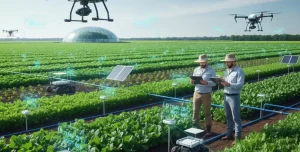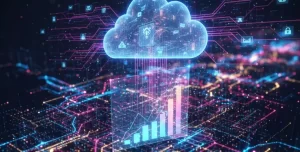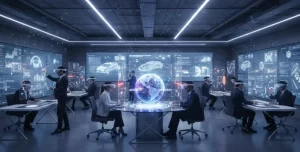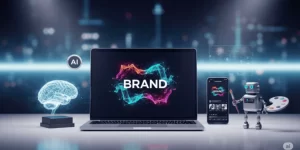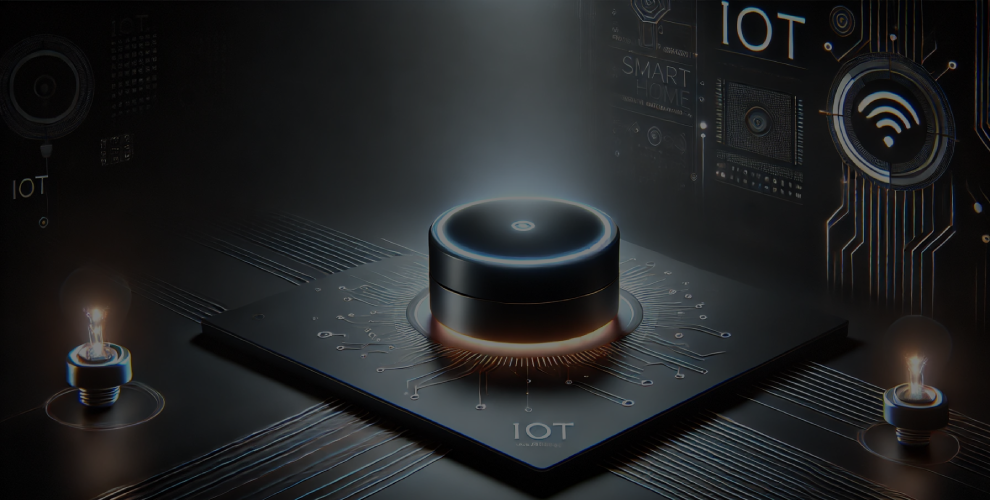
What is IoT Technology and Its Impact on the Future?
Table of Contents
Introduction
The Internet of Things (IoT) is revolutionizing the way we live and work, offering unprecedented levels of connectivity and automation. IoT technology connects everyday objects to the internet, enabling them to send and receive data, and interact with each other in smart ways.
In this article, we’ll provide an overview of IoT technology, its key components, and how it is shaping the future of various industries and our daily lives.
Key Takeaways
- Understanding IoT Technology: Learn what IoT technology is and its core components.
- Impact on Connectivity and Automation: Discover how IoT is transforming industries and everyday life.
- Future Trends: Gain insights into the future developments in IoT technology.
What is IoT Technology?
The network of linked devices that exchange data and communicate with one another online is referred to as the Internet of Things (IoT).
These devices range from everyday household items like smart thermostats and security cameras to complex industrial machinery. The primary goal of IoT is to enhance automation, efficiency, and decision-making by leveraging real-time data.
Definition and Basic Concept:
- The Internet of Things (IoT) is a network of physical things that have been embedded with software, sensors, and other technologies to allow them to communicate and share data with other systems and devices via the internet.
- Basic Concept: The fundamental idea is to create a seamless ecosystem where devices can interact, share information, and perform tasks autonomously.
Historical Background and Evolution:
- Early Beginnings: The concept of IoT dates back to the 1980s when the idea of connected devices first emerged. However, it wasn’t until the late 1990s and early 2000s that technological advancements made it feasible.
- Growth and Expansion: The proliferation of wireless networks, advancements in sensor technology, and the development of cloud computing have significantly accelerated the growth of IoT.
Core Components of IoT
Sensors and Actuators
Sensors and actuators are the building blocks of IoT devices. Sensors collect data from the environment, such as temperature, humidity, and motion, while actuators perform actions based on the data received, such as turning on a light or adjusting a thermostat.
Key Functions:
- Data Collection: Sensors gather real-time data from the physical world.
- Action Execution: Actuators perform specific actions based on the data and predefined rules.
Connectivity
Various connectivity options, such as Wi-Fi, Bluetooth, Zigbee, and cellular networks, enable devices to transmit data efficiently.
Key Functions:
- Network Communication: Ensuring reliable data transmission between devices and platforms.
- Protocol Support: Supporting multiple communication protocols to facilitate interoperability.
Data Processing
Data processing involves analyzing and interpreting the data collected by IoT devices. This step is crucial for deriving meaningful insights and making informed decisions. Data processing can occur on the device, at the edge, or in the cloud.
Key Functions:
- Data Analysis: Applying algorithms and machine learning to extract insights from raw data.
- Real-Time Processing: Enabling quick decision-making by processing data as it is received.
User Interfaces
User interfaces (UIs) are essential for enabling users to interact with IoT devices and systems. These interfaces can range from mobile apps and web dashboards to voice assistants and wearable devices. A well-designed UI ensures that users can easily monitor, control, and manage their IoT devices.
Key Functions:
- Monitoring: Allowing users to view the status and performance of their IoT devices.
- Control: Enabling users to send commands and adjust settings on their devices.
- Management: Providing tools for configuring and maintaining the IoT ecosystem.
How IoT is Transforming Connectivity and Automation
Smart Homes
IoT technology is transforming homes into smart homes, enhancing comfort, security, and energy efficiency. Smart home devices such as thermostats, security cameras, and lighting systems can be controlled remotely and automate tasks based on user preferences and real-time data.
Examples:
- Smart Thermostats: Automatically adjust temperature settings based on occupancy and weather conditions, reducing energy consumption.
- Security Systems: Provide real-time alerts and remote monitoring of home security, enhancing safety and peace of mind.
- Smart Lighting: Automatically control lighting based on time of day, occupancy, and natural light levels.
Industrial Automation
In the industrial sector, IoT is revolutionizing automation by providing real-time monitoring, predictive maintenance, and efficient resource management. Industrial IoT (IIoT) enables factories and plants to operate more efficiently, safely, and cost-effectively.
Examples:
- Predictive Maintenance: Monitoring equipment health and predicting failures before they occur, reducing downtime and maintenance costs.
- Asset Tracking: Real-time tracking of assets and inventory, optimizing logistics and reducing losses.
- Process Automation: Automating manufacturing processes to increase efficiency and reduce human error.
Healthcare
IoT technology is making significant strides in healthcare by enabling remote patient monitoring, personalized treatment plans, and improved diagnostics. Connected medical devices collect and transmit patient data, allowing healthcare providers to make informed decisions and offer timely interventions.
Examples:
- Wearable Health Monitors: Track vital signs such as heart rate, blood pressure, and glucose levels, providing continuous health data.
- Smart Medical Devices: Devices like smart inhalers and insulin pumps deliver medication precisely and monitor usage.
- Remote Patient Monitoring: Allows healthcare providers to monitor patients’ health conditions in real-time, reducing hospital visits and improving care.
Impact of IoT on Different Sectors
Retail
IoT is enhancing the retail experience by providing personalized customer service, optimizing inventory management, and improving supply chain efficiency. Smart shelves, beacons, and connected POS systems are transforming the way retailers interact with customers and manage their operations.
Examples:
- Personalized Shopping: Beacons and mobile apps deliver personalized offers and product recommendations based on customer behavior.
- Inventory Management: Smart shelves and RFID tags track inventory levels in real-time, reducing stockouts and overstock situations.
- Supply Chain Optimization: IoT-enabled logistics systems monitor the condition and location of goods throughout the supply chain, ensuring timely deliveries.
Agriculture
IoT is driving innovation in agriculture through precision farming and resource management. Connected sensors and devices provide real-time data on soil conditions, weather, and crop health, enabling farmers to make data-driven decisions.
Examples:
- Soil Moisture Sensors: Monitor soil moisture levels to optimize irrigation schedules and conserve water.
- Weather Stations: Provide localized weather data to help farmers plan planting and harvesting activities.
- Drones: Use aerial imaging and sensors to assess crop health, monitor fields, and apply pesticides or fertilizers precisely.
Energy
IoT technology is transforming the energy sector by enabling smart grids, efficient energy consumption, and the integration of renewable energy sources. IoT devices and sensors monitor energy usage, optimize grid operations, and provide consumers with insights to manage their energy consumption better.
Examples:
- Smart Meters: Provide real-time data on energy consumption, allowing consumers to monitor and reduce their usage.
- Grid Management: IoT sensors help utilities manage the distribution of electricity, detect outages, and balance load.
- Renewable Integration: IoT systems facilitate the integration of renewable energy sources like solar and wind into the grid.
Cities
IoT is a cornerstone of developing smart cities, improving urban management, and enhancing the quality of life for residents. Connected sensors and devices collect data on various aspects of city life, from traffic and air quality to waste management and public safety.
Examples:
- Smart Traffic Management: IoT sensors and cameras monitor traffic flow and adjust traffic signals to reduce congestion.
- Environmental Monitoring: Sensors track air quality, noise levels, and water quality, providing data for better environmental management.
- Public Safety: Connected cameras and emergency response systems enhance public safety by providing real-time surveillance and quicker response times.
Challenges and Considerations
Security and Privacy
As IoT devices collect and transmit vast amounts of data, ensuring the security and privacy of this data is crucial. Vulnerabilities in IoT systems can lead to data breaches, unauthorized access, and misuse of personal information.
Challenges:
- Data Encryption: Ensuring that data is encrypted during transmission and storage.
- Compliance: Adhering to regulations and standards for data protection and privacy.
Interoperability
Interoperability is a significant challenge in IoT, as devices from different manufacturers often use various communication protocols and standards. Ensuring seamless communication and integration between diverse devices is essential for a cohesive IoT ecosystem.
Challenges:
- Standardization: Developing and adopting common standards and protocols for IoT devices.
- Compatibility: Ensuring that new devices are compatible with existing systems and networks.
Scalability
As the number of IoT devices grows, managing and scaling IoT networks becomes increasingly complex. Scalability is crucial to accommodate the expanding ecosystem of connected devices and the data they generate.
Challenges:
- Infrastructure: Building infrastructure that can handle the increased data load and device connections.
- Resource Management: Efficiently managing computational and network resources to maintain performance.
Cost
Implementing IoT technology can be costly, including expenses for devices, connectivity, data storage, and maintenance. Balancing the cost of implementation with the expected benefits is a critical consideration for businesses and consumers.
Challenges:
- Initial Investment: High upfront costs for deploying IoT systems and infrastructure.
- Operational Costs: Ongoing expenses for connectivity, data storage, and device maintenance.
Future Trends in IoT Technology
AI and Machine Learning
AI and ML enable predictive analytics, automate decision-making processes, and enhance the overall efficiency of IoT systems.
Trends:
- Smart Automation: Automating tasks and processes based on real-time data and machine learning algorithms.
- Enhanced Analytics: Applying AI to analyze large datasets and extract valuable insights.
Edge Computing
By processing data closer to its source, edge computing lowers latency and uses less bandwidth. Applications that need real-time analysis and response, including industrial automation and driverless cars, will benefit most from this trend.
Trends:
- Reduced Latency: Faster data processing and response times by analyzing data at the edge.
- Bandwidth Efficiency: Decreased need for data transmission to central servers, saving bandwidth.
- Real-Time Decision-Making: Enabling quick and efficient decision-making processes.
5G Connectivity
The rollout of 5G networks is set to revolutionize IoT by providing faster and more reliable connectivity. 5G supports a higher density of connected devices and offers lower latency, enhancing the performance of IoT applications.
Trends:
- Enhanced Connectivity: Faster and more stable connections for IoT devices.
- Higher Device Density: Supporting a larger number of devices within a given area.
- Improved Performance: Lower latency and higher bandwidth for real-time applications.
Blockchain
Blockchain technology is being explored for securing IoT transactions and data sharing. Blockchain provides a decentralized and tamper-proof ledger, ensuring the integrity and security of IoT data.
Trends:
- Data Security: Enhancing the security of IoT data through decentralized ledgers.
- Transparent Transactions: Providing transparency and traceability for IoT data exchanges.
- Decentralized Networks: Reducing the reliance on central authorities for data validation and security.
Conclusion
The Internet of Things (IoT) is a transformative technology that is reshaping the future of connectivity and automation.
By understanding its core components, the impact on various sectors, and the future trends, we can better appreciate the potential of IoT to enhance our lives and industries.
Stay tuned to WikiGlitz for more insights and updates on the latest technology trends. We hope you found this guide informative and helpful in understanding IoT technology and its impact on the future.
FAQs
What is IoT technology?
IoT technology refers to the network of interconnected devices that communicate and share data with each other via the internet, enabling automation and enhanced decision-making.
How does IoT improve connectivity and automation?
IoT improves connectivity and automation by enabling devices to interact, share information, and perform tasks autonomously, leading to increased efficiency and convenience.
How is IoT transforming different sectors?
IoT is transforming sectors like smart homes, industrial automation, healthcare, retail, agriculture, energy, and cities by enhancing efficiency, safety, and decision-making.
Want to keep up with our blog?
Our most valuable tips right inside your inbox, once per month.
Error: Contact form not found.
WikiGlitz Team
Welcome to WikiGlitz, your ultimate destination for tech insights and innovation. Our expert team is dedicated to delivering free resources and professional advice on various technology topics, including Artificial Intelligence, Cyber Security, Cloud Computing, and more. We strive to empower our readers with up-to-date information and practical guidance, ensuring you stay ahead in the rapidly evolving tech landscape. At WikiGlitz, we are passionate about making complex technology accessible to everyone. Our team of seasoned experts curates content that is both informative and engaging, helping you understand and leverage the latest tech trends. Whether you're a tech enthusiast or a professional, WikiGlitz is your go-to source for reliable, expert-driven content. Join us on this journey to explore and embrace the future of technology.


